Rafael López's Blog, page 8
September 17, 2017
Hispanic Heritage. Celia Cruz
CELIA CRUZ stood out as the most influential female figure in Afro-Cuban music. Her flamboyant style, powerful projection and the warmth of her voice resonates. She was born in Havana, Cuba, the second oldest in a family of fourteen children and often sung the younger ones to sleep. Her African ancestors were forcibly brought to the island to work in the sugar fields. Her father was a railroad stoker and wanted Celia to become a teacher. She had other ideas and as a teenager won first prize in a radio singing contest. Drawn to Cuba’s strong salsa sound she connected to music that blended African rhythms with more traditional Spanish music. Celia was determined and went on to study voice, piano and music theory at the National Conservatory of Music in Havana.
Her big break came when the well known Cuban band, La Sonora Matancera brought her on as their lead vocalist. She was the rare female voice on the Cuban music scene, and the band played at the legendary Tropicana Nightclub, starred in films and toured all over Latin America. In 1959, Cuba became a socialist state under the leadership of Fidel Castro.

“I send to Cuba my voice, from this distant beach.” This is a line from a song sung by Celia Cruz in the early days of her exile from her native country.
This illustration was created for the book My Name is Celia written by Monica Brown. While the band was on tour in Mexico they decided to defect and this outraged Fidel Castro who vowed the group would never return to Cuba again. They settled in the U.S. and although Celia lived in New York she was a big star in Miami and performed there regularly. Cuban-Americans connected with her life and music as they identified with fleeing Cuba to achieve success in their new homeland. When the singer died from cancer in 2003, her casket was flown to Miami where 200,000 fans turned out to say goodbye.
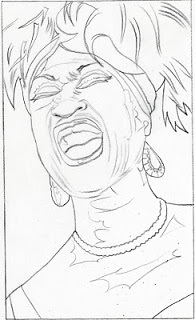
Tight sketch for U.S.P.S. Celia Cruz stamp
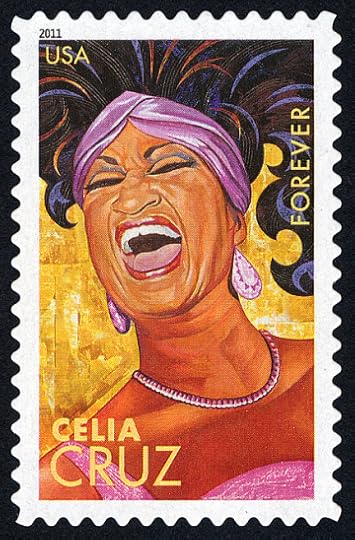
In 2011 I was asked to create her portrait as part of a series for the United States Postal Service called Latin Music Legends. Once the singer was dining in a Miami cafe when a waiter asked her if she wanted sugar in her coffee. In a Billboard interview she replied, “Chico, you’re Cuban. How can you even ask that? With sugar!” and so her signature shout was born. When she came on stage she would cry out Sugar! “Azucar” and the audience went wild. For the portrait above I attempted to capture her energy and style. She was famous for improvising lyrics and her music forces you to get up and move. In dazzling costumes, crazy wigs and soaring platform heels she wowed fans with her dynamic, one of a kind style.
At first she was unknown beyond the Cuban exiles but in the mid-1960’s joined the Tito Puente Orchestra. The Queen of Salsa went on to make gold and multiple platinum records and win eight Grammy awards. The National Endowment of the Arts also awarded her the American National Medal of the Arts. Celia, a telenovela in eighty episodes aired on Telemundo, hosted by Marc Anthony and Gloria Estefan. In New York a music school, The Celia Cruz Bronx High School of Music was named, a tribute to her unforgettable musical legacy.
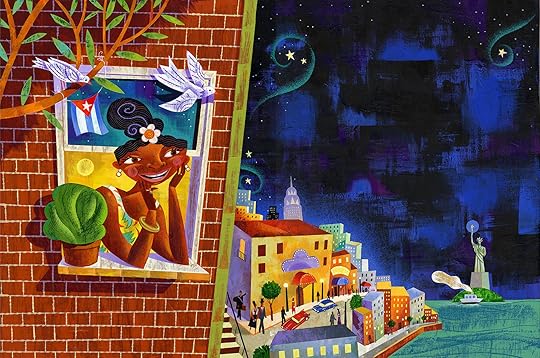
Spread from children’s book, My Name is Celia
September 16, 2017
Hispanic Heritage. George Meléndez Wright
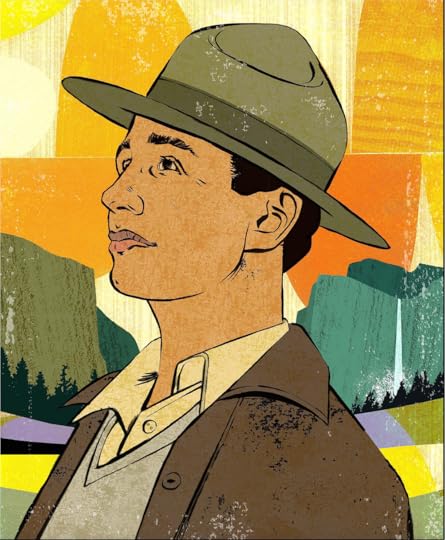
This Hispanic Heritage month I am sharing artwork created to tell stories of incredible people who made a difference. This portrait of George Meléndez Wright is from the book Bravo! Poems About Amazing Hispanics written by Margarita Engle. At a time when National Park funding is being slashed and National Monuments are shrinking, his groundbreaking efforts on behalf of wildlife and parks is even more meaningful. National treasures, these priceless public lands have inspired the powerful poetry of John Muir, and timeless posters created in conjunction with the Works Progress Administration.
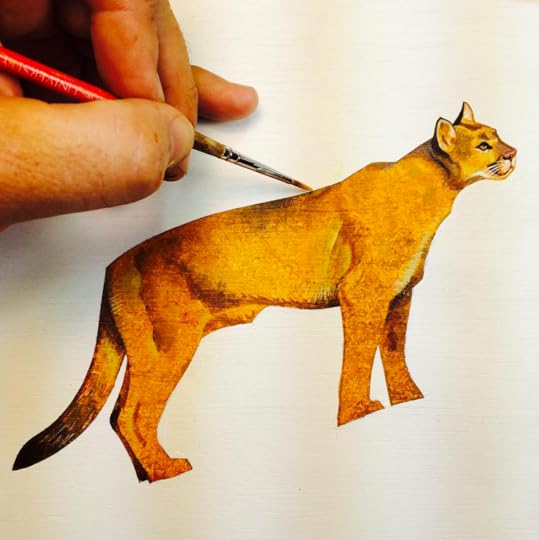
George Meléndez Wright [1903-1936] filled his short life with purpose. A San Francisco native and American biologist, he led the first scientific survey of flora and fauna for the National Park Service. His mother Mercedes, born in San Salvador married a well known San Franciscan, sea-captain John Tennant Wright. Both his parents died when he was a child and his great aunt Cordelia fanned the flames of his fascination with science and nature. Studying forestry and zoology at U.C. Berkeley, he joined the team at Yosemite National Park in 1927. At this period in history, the Park Service routinely killed predators and encouraged the public to feed animals including wild bears. Wright personally funded a four year study that effectively established a foundation for wildlife conservation at American national parks. This wildlife survey helped prevent the extinction of rare species such as trumpeter swans and mountain lions.
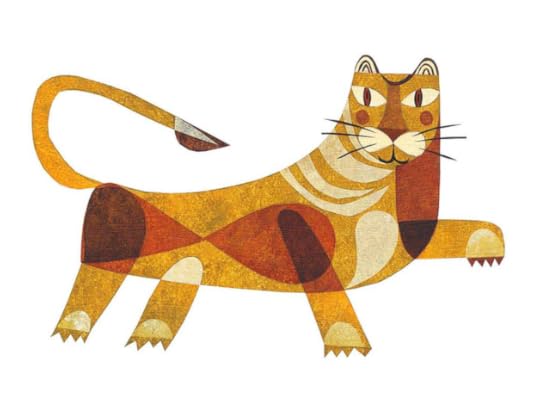
While serving on a commission to establish new parks in New Mexico along the Mexican border, George died at age 31 in an automobile accident. The George Wright society, named in his honor is a nonprofit association of researchers, administrators and teachers who work for the preservation of, parks, cultural/historic sites and other protected areas.
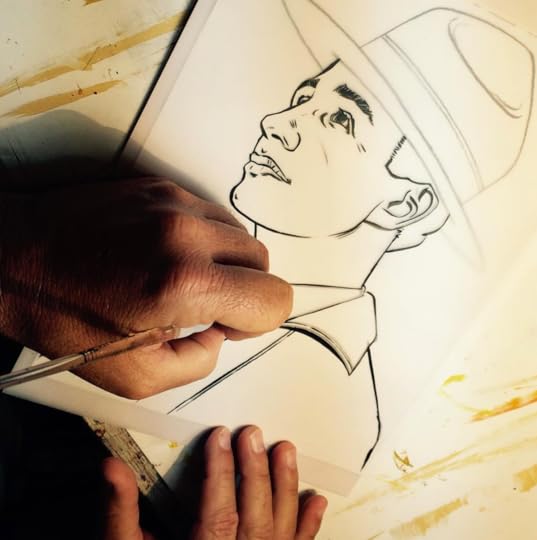
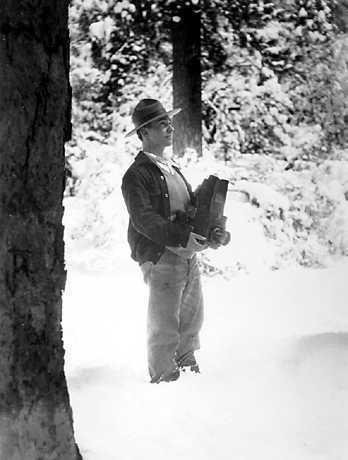
George Meléndez Wright at home in the forest.
Keep close to Nature’s heart… and break clear away, once in a while, and climb a mountain or spend a week in the woods. Wash your spirit clean.- John Muir
September 15, 2017
Hispanic Heritage. Aída de Acosta
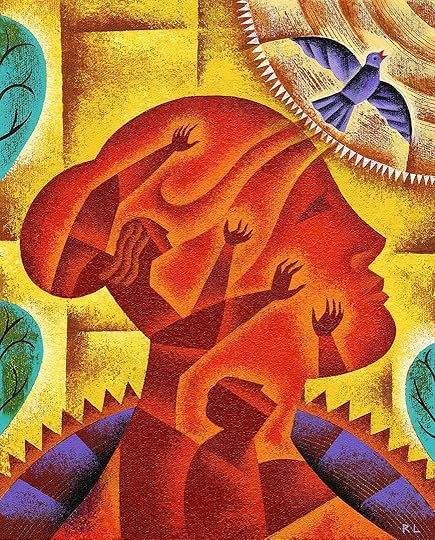
Today marks the start of Hispanic Heritage Month in the U.S. held September 15 to October 15. There has never been a more important time to celebrate the rich cultures, history and contributions of American citizens whose family came from Mexico, Spain, the Caribbean and Central and South America.
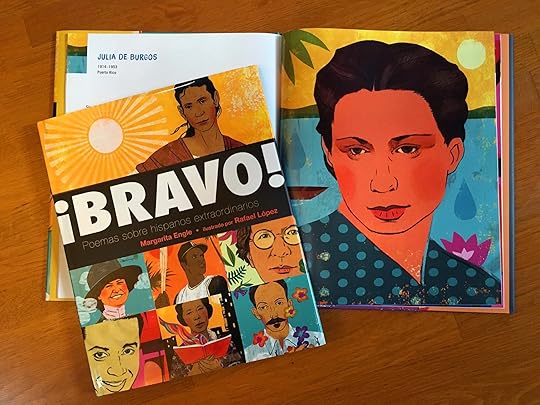
Storytelling is about connecting to other people, putting ideas out there into the world. I recently collaborated with poet Margarita Engle on a book called Bravo! Poems about Amazing Hispanics. This past week our publisher Holt & Company, let us know the book was honored with the Silver Medal from the Society of Illustrators New York Original Art show. Hoping this recognition will inspire and introduce young readers and others to the legacy of amazing Latinos, many who are not mentioned in history books.There are so many powerful stories out there waiting to be told so let’s get the conversation started…
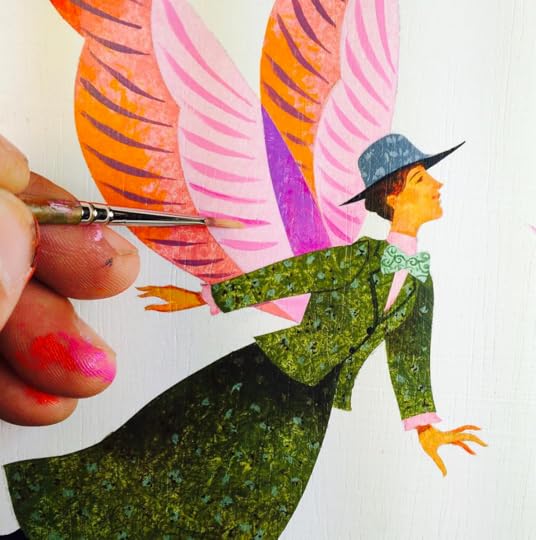
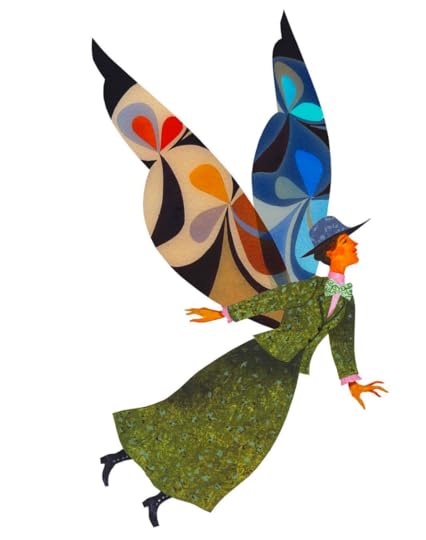
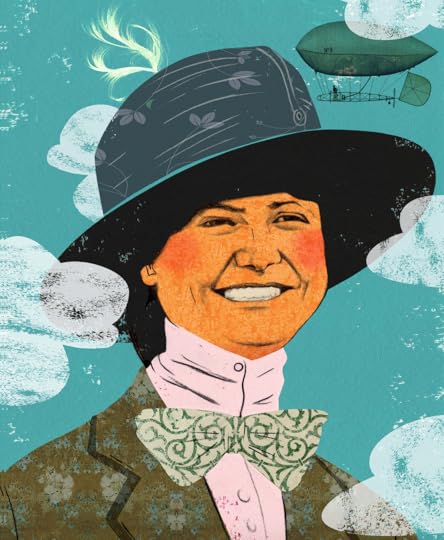
AIDA DE ACOSTA
Aída de Acosta was born in New Jersey, her mother Spanish and her dad a Cuban shipping executive. She was the first woman to fly a powered aircraft solo. Traveling with her mother in Paris she was fascinated from the first moment she saw dirigibles. In 1903, Aida was just 19 years old, when a Brazilian aviator friend took her for a ride by flying his dirigible downtown and parking it on the street for dinner at a favorite restaurant. After just three flight lessons she took the air, nearly six months before the Wright brothers flew in their heavier than air powered aircraft.
This female pilot also sold two million dollars worth of Liberty Bonds during World War I. When the war ended, Aída de Acosta traveled to Europe to work for the American Committee for Devastated France. She also had a profound interest in the arts and in 1935 New York Mayor Fiorello La Guardia named her chairwoman of a the newly formed art committee. Later in life she lost eyesight in one eye to glaucoma and became an advocate for improving eye care, as director of the first eye bank in the United States. A philanthropist, she led a multi-million dollar campaign to establish the Wilmer Ophthalmological Institute at Johns Hopkins University.
Stories worth Telling: Hispanic Heritage

Today marks the start of Hispanic Heritage Month in the U.S. held September 15 to October 15. There has never been a more important time to celebrate the rich cultures, history and contributions of American citizens whose family came from Mexico, Spain, the Caribbean and Central and South America.

Storytelling is about connecting to other people, putting ideas out there into the world. I recently collaborated with poet Margarita Engle on a book called Bravo! Poems about Amazing Hispanics. This past week our publisher Holt & Company, let us know the book was honored with the Silver Medal from the Society of Illustrators New York Original Art show. Hoping this recognition will inspire and introduce young readers and others to the legacy of amazing Latinos, many who are not mentioned in history books.There are so many powerful stories out there waiting to be told so let’s get the conversation started…



Aída de Acosta was born in New Jersey, her mother Spanish and her dad a Cuban shipping executive. She was the first woman to fly a powered aircraft solo. Traveling with her mother in Paris she was fascinated from the first moment she saw dirigibles. In 1903, Aida was just 19 years old, when a Brazilian aviator friend took her for a ride by flying his dirigible downtown and parking it on the street for dinner at a favorite restaurant. After just three flight lessons she took the air, nearly six months before the Wright brothers flew in their heavier than air powered aircraft.
This female pilot also sold two million dollars worth of Liberty Bonds during World War I. When the war ended, Aída de Acosta traveled to Europe to work for the American Committee for Devastated France. She also had a profound interest in the arts and in 1935 New York Mayor Fiorello La Guardia named her chairwoman of a the newly formed art committee. Later in life she lost eyesight in one eye to glaucoma and became an advocate for improving eye care, as director of the first eye bank in the United States. A philanthropist, she led a multi-million dollar campaign to establish the Wilmer Ophthalmological Institute at Johns Hopkins University.
July 19, 2017
ALL THE WONDERS Podcast: Bravo! Poems about Amazing Hispanics
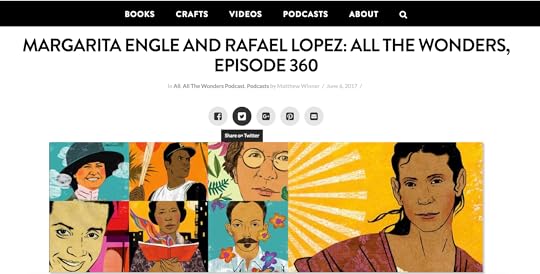
It was serious fun to sit down and chat with Matthew Winner at ALL THE WONDERS about the art and craft of making books. In this podcast, author and poet Margarita Engle and I talk about capturing the spirit of a person through poem and portrait. We discuss creating a first person time travel experience for children and the challenges of capturing the essence of an individual in Bravo! Poems about Amazing Hispanics.
Please select the link above and press the play button to listen to this podcast. There are so many engaging interviews from ALL THE WONDERS to explore, have a listen and never stop reading.
May 4, 2017
Getting Colorful with Eric Carle and Friends
Hey there! Join me in wishing a happy book birthday to What’s Your Favorite Color? by Eric Carle and Friends from Henry Holt & Company.

Inviting children and families to join me and friends Mike Curato, Etienne Delessert and William Low for a lively afternoon at the Eric Carle Museum in Amherst, Massachusetts this Sunday May 7 from 1-4pm. You can catch the exhibition there about this new book and I’m looking forward to leading a workshop about coming up with ideas. It will be fun to watch kids make their own creations at the Art Studio at the Carle. You never need an appointment there and get to play with your good friends imagination, colors and ideas.

I have always wanted to see the Eric Carle Museum of Picture Book Art so I’m flying all the way from my studio in California. This amazing museum was founded by none other than Eric Carle who made the unforgettable book The Very Hungry Caterpillar and lots of other treasures that I keep at home on my shelf.
I have to tell you that I had a very hard time picking out my favorite color for this picture book because when it comes to the subject I can change like a chameleon.You see I come from Mexico where color is everywhere. Here’s a photo I took from the street near my home in San Miguel de Allende, Mexico as proof that we don’t suffer from any form of chromaphobia. Because I grew up on a steady diet of color it’s important to always get my daily dose. That’s why I decided on the all around-great color-gentle, genuine gray that comes in many shades because it goes so well with every other color under the rainbow. I admit I like to use a lot of them.
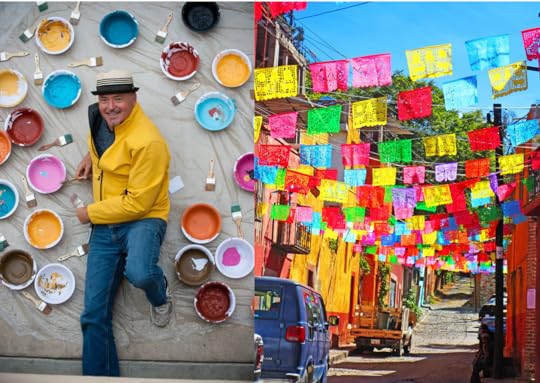
May 3, 2017
Illustration for the cover of My Brigadista Year by Newbery Medalist Katherine Paterson

Prior to 1959, the lack of educational access and instructors in rural areas of Cuba resulted in a literacy rate between 60-76%. 1961 was called the “year of education” and literacy brigades were sent out in to the countryside to build schools, teach new teachers and those that lived there to read and write. Led by 100,000 teenage literacy workers of all ethnicities these young people went to live and teach campesino families. They left with knapsacks that held just two pair of boots, two pairs of socks, blanket, their olive-green beret, a blanket, copies of a teacher’s manual and a student primer as well as a hammock and lantern. This campaign was an amazing success with 707,212 adults learning to read and write boosting the national literacy rate to 96%. Thanks to Katherine Paterson for telling the story of a young brigadista who made a difference as part of the Cuban Literacy Campaign. Her new middle-grade novel “My Brigadista Year” is due for release from Candlewick Press in October and I was fortunate to create the cover. You can learn more about it in this article from Publisher’s Weekly.
April 12, 2017
Pursue Poetry this April
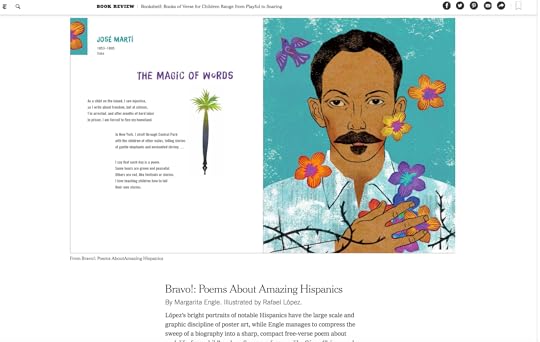
Both my parents were architects who designed their own house in Mexico. The focal point of our living room were floor to ceiling bookshelves on two long walls they custom built to house books and musical recordings. I remember the excitement exploring second hand bookshops and weekend flea markets with my father to discover treasures that others had left behind. At home I spent endless hours at that bookshelf traveling to distant places through words and images. Part of the thrill of travel is trusting your instincts and getting lost sometimes. Lucky me it was in the poems of Octavio Paz and Pablo Neruda.
April is Poetry Month where tens of millions of readers, students, teachers, librarians and booksellers recognize the importance of poetry in our culture and lives. The unexpected deluge of rain after drought in California has pushed the landscape into a state of wild blooming color. If you open your eyes to look there is poetry all around and I’ve enjoyed watching students and teachers bring poetry into their classrooms. You can order an inspiring free Poetry month poster for your classroom by Maira Kalman designed by book cover whiz Chip Kidd. You can be a part of teach this poem featuring one amazing poem a week along with videos, projects and resources to make the journey worthwhile. My studio is in downtown San Diego, a great spot to chalk a poem on the sidewalk and see what happens.
This past week the New York Times Book Review/ Bookshelf talked about Books of Verse for Children including five poetry picture books to fuel the minds of young readers. Excited to see Margarita Engle’s powerful poetry in Bravo! Poems About Amazing Hispanics featured there with other amazing titles just right for a poetry celebration.
March 19, 2017
February 18, 2017
Maybe Something Beautiful
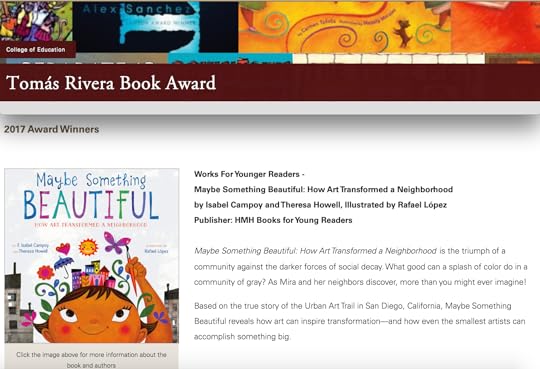
GRATEFUL on this rainy day to discover that Maybe Something Beautiful, How Art Transformed a Neighborhood has won the 2017 Tomás Rivera Mexican American Children’s Book Award. Thank you to my incredible colleagues, authors F. Isabel Campoy and Theresa Howell for artfully telling the story of the Urban Art Trail community murals we began back in 1997. A really big shout out to the children, families, artists and volunteers whose energy and spirit help make these murals happen around the country.

Designing and Planning a community mural in San Diego
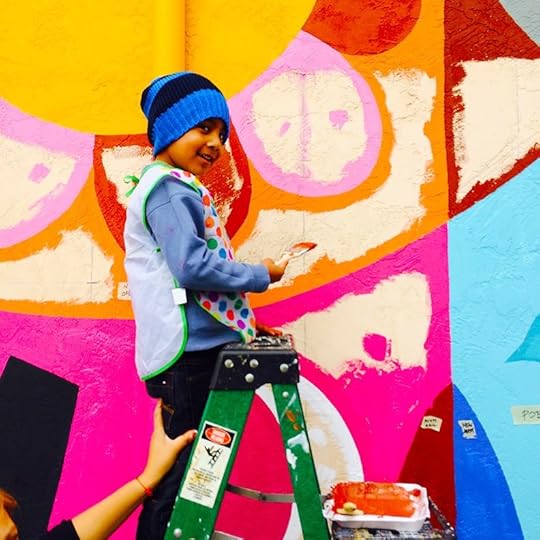
Flying Colors.
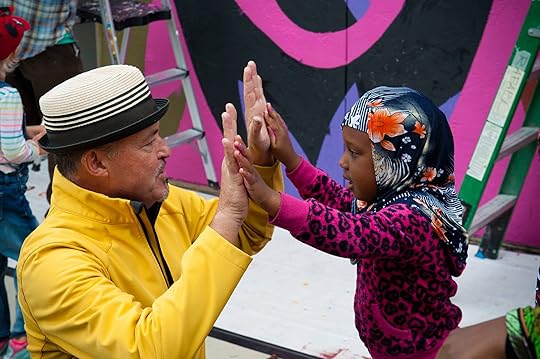
Here’s to the power of young artists who make a difference.

Community Mural Painting in San Diego

Tomás Rivera, Dean of Mexican American Literature.
I am a huge fan of Tomás Rivera. Rivera’s writings, in English and Spanish shine light on the courage of Mexican American migrant farm workers, especially children who face hardships with resilient human spirit. In these challenging times, his work continues to inform the public and tell their stories, bringing hope to generations of migrants.




